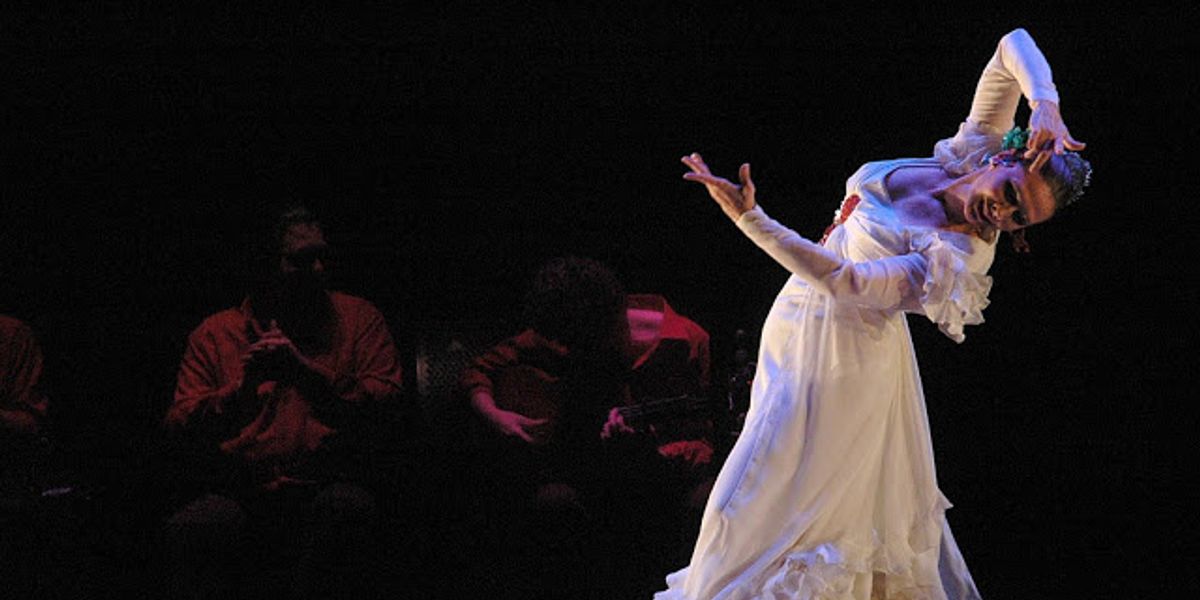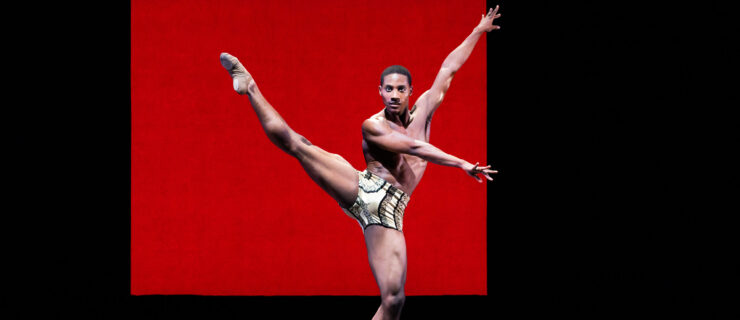Where to Find the Best Flamenco in Spain
Flamenco’s roots are deeply intertwined in the Andalusian culture of the southern-most region of Spain. If you travel there to dance, you’ll be in good company—from aficionados to professionals, flamencos from all over the world flock to cities like Madrid, Jerez, Sevilla and Granada. Each has its own appeal, whether you’re looking for intensive study or just to catch an amazing performance:
Madrid
Known for its lively nightlife and museums, this European capital has lots to offer flamenco dancers.
Where to take class:
Madrid is home to one of the most famous flamenco schools: Amor de Dios. From dawn until dusk, the sounds of flamenco footwork carry onto the busy street below. The dozens of studios and hallways hold history—photographs, costumes, old flyers and newspaper clippings line the walls. You can take class from flamenco legends of the 20th century, such as La Tati and Merche Esmeralda, or icons of the 21st century such as Concha Jareño and Alfonso Losa. Classes focus on drilling technique, from flamenco to Spanish classical. In the market below, you can catch these master teachers buying fresh produce or having a coffee between classes.
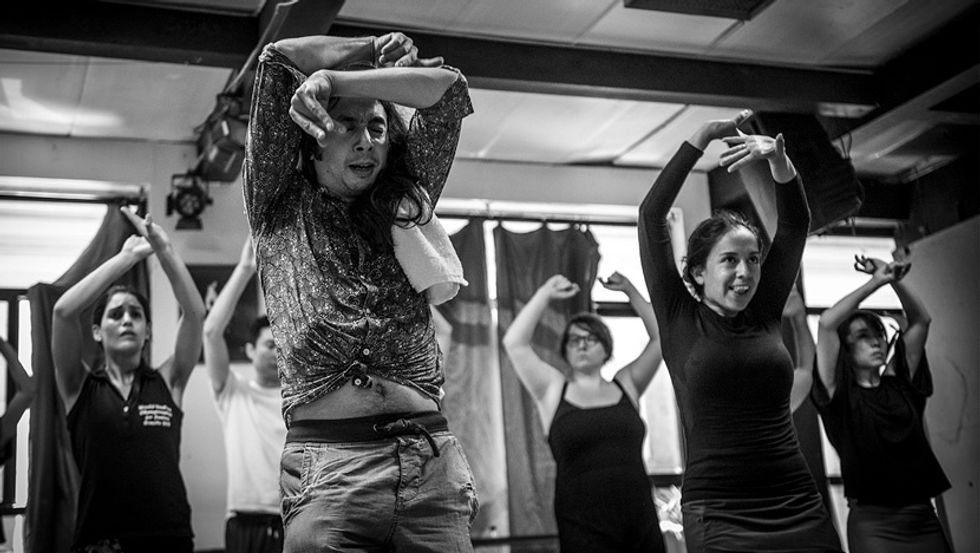
Amor de Dios, PC Beatrix Mexi Molnar
Where to see a performances:
If you have any energy after class, tablaos (small theater venues, traditional flamenco performance spaces) such as La Carboneras, Casa Patas or La Villa Rosa are a great place to wind down and see flamenco in an intimate setting.

Las Carboneras Tablao in Madrid. PC Las Carboneras
Jerez de la Frontera
If a big city is not your scene, Jerez de la Frontera, home to the Centro Andaluz de Flamenco (Spain’s national flamenco archive), might be a better fit.
The homegrown style:
Bulerías, a festive dance usually part of flamenco parties and featured at the end of many flamenco performances, comes from this small town. Learning the steps along with the songs can help you understand the intricate communication between dancer and singer.
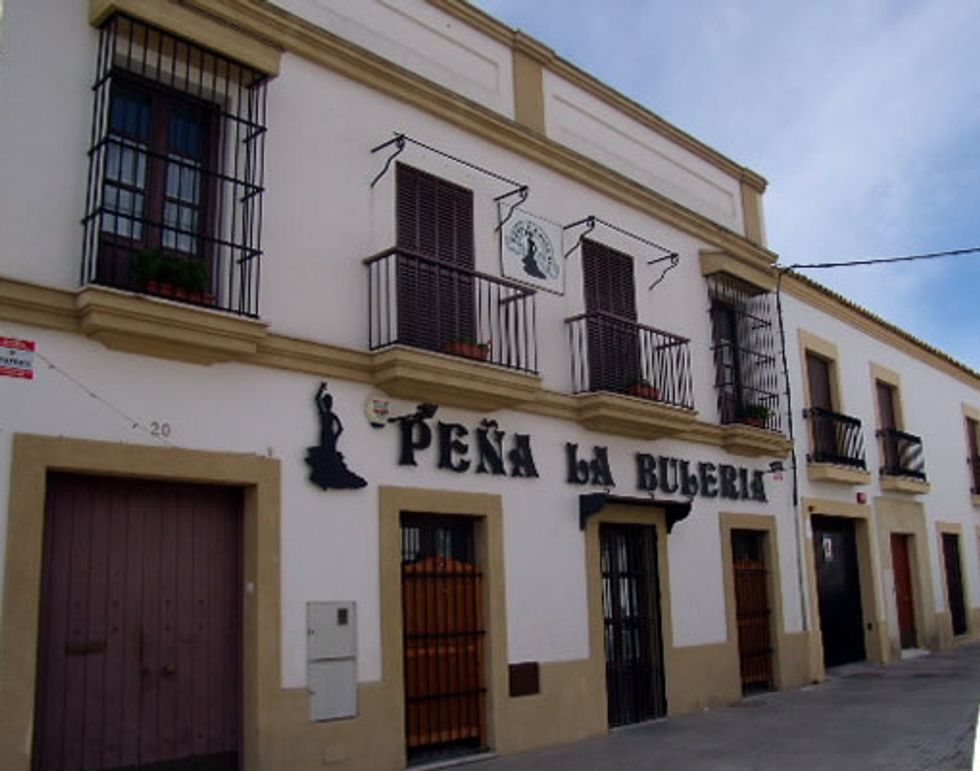
Peña Flamenca La Bulería
Where to see a performance:
Check out Peña Flamenca La Bulería, where aficionados gather to hear masters of flamenco music and dance in an un-amplified, intimate setting for a reasonable price.
What to drink:
Jerez means sherry, and in fact the sweet wine comes from this small town. Most bodegas have tastings, or enjoy sherry at a sidewalk café as you people-watch.
Sevilla
The winding, labyrinth-like streets of Sevilla hold flamenco at nearly every bend and turn.
Where to take class:
Sevilla has several flamenco schools, from the avant-garde Andrés Marín’s Flamenco Abierto to Juana Amaya’s gypsy-style flamenco studio, or Spanish classical at Flamenco Danza. Classes in Sevilla focus less on technique and more on stylized versions of flamenco along with the dance’s connection to the cante (singing).
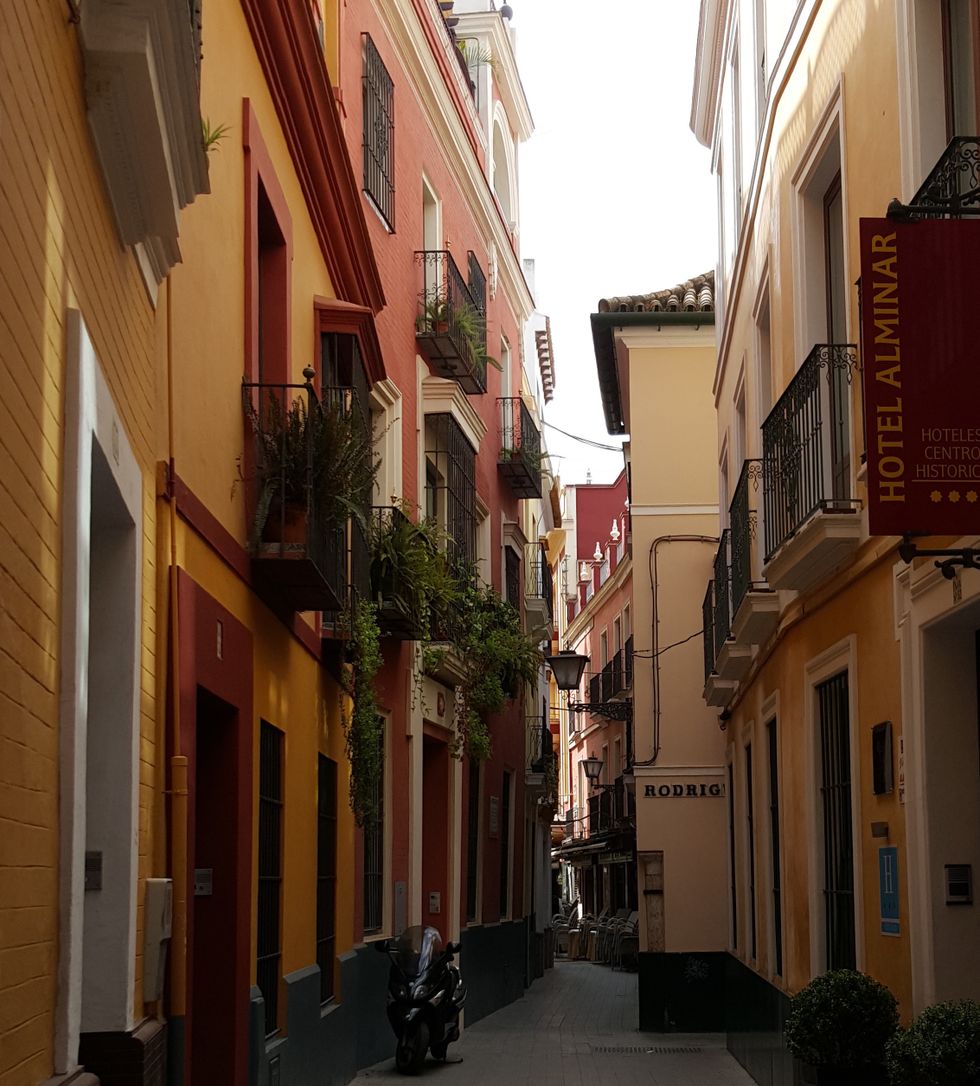
A winding street in Sevilla. PC Alice Blumenfeld
Getting around:
It might take you a few tries to get from one studio to another—the streets intertwine and curve so you lose all sense of direction. But chances are, you will run into colleagues from flamenco class sooner or later, so enjoy a Cruzcampo (Sevilla’s local beer). Rehearsal studios are available in many areas of the city for as little as three Euros an hour, so you can practice your new steps.
The festival scene:
If you visit Sevilla in the spring, be sure to spend a day (or a few) at the Feria de Abril, a week-long celebration where the people of Sevilla gather wearing traditional trajes flamencas (dresses worn to the feria) and dance Sevillanas, a regional folk dance closely related to flamenco. The city comes alive with colorful outfits, singing, dancing, blooming orange blossoms and horse carriages.
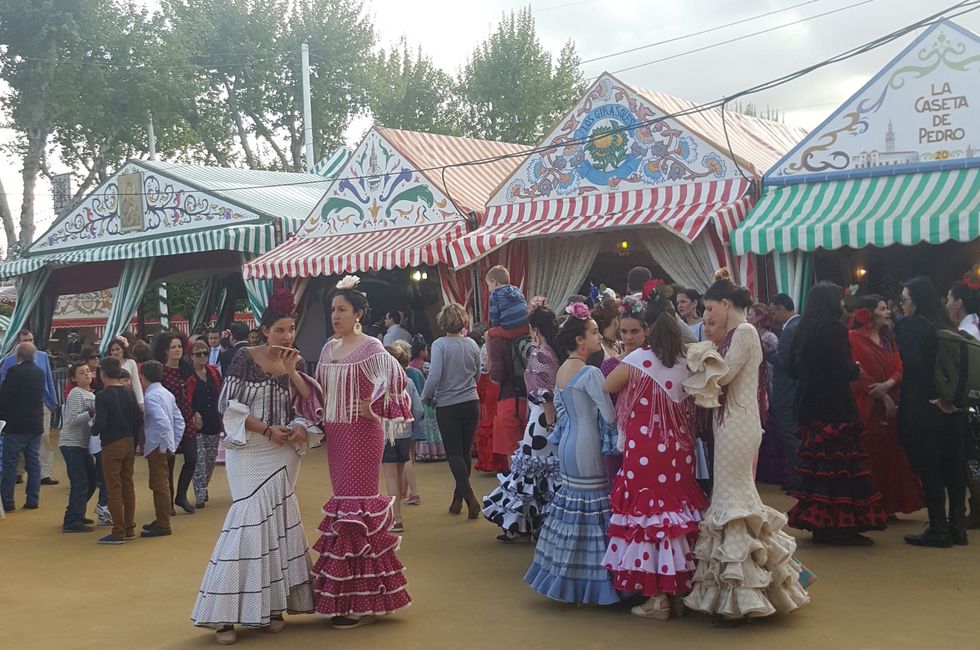
Feria de Sevilla. PC Alice Blumenfeld
Every other fall the Bienal de Sevilla takes place, with top flamenco artists from Spain and around the world premiering new works. The festival has also added a series of free outdoor performances featuring the city’s Moorish buildings, cathedrals and parks as the backdrop.
Granada
Granada’s flamenco has a mystique like no other. There’s a reason writers and artists from around the world were inspired by this city and its Moorish palace, The Alhambra.
What to do:
Climbing the narrow stone streets of the Albayzín, an ancient neighborhood with whitewashed houses and steep narrow steps, makes a great pre-class warm-up. You can get awe-inspiring views of the landscape in the valley below. You may also feel like you’ve traveled back in time, surrounded by Moorish architecture and merchants selling textiles and other goods from northern Africa.

View of the Alhambra from the Albayzín neighborhood in Granada. PC Alice Blumenfeld
Where to take class:
Many flamenco classes and performances take place in caves. Yes, caves! But don’t worry: They have lights, a dance floor, and if you’re lucky, air conditioning.
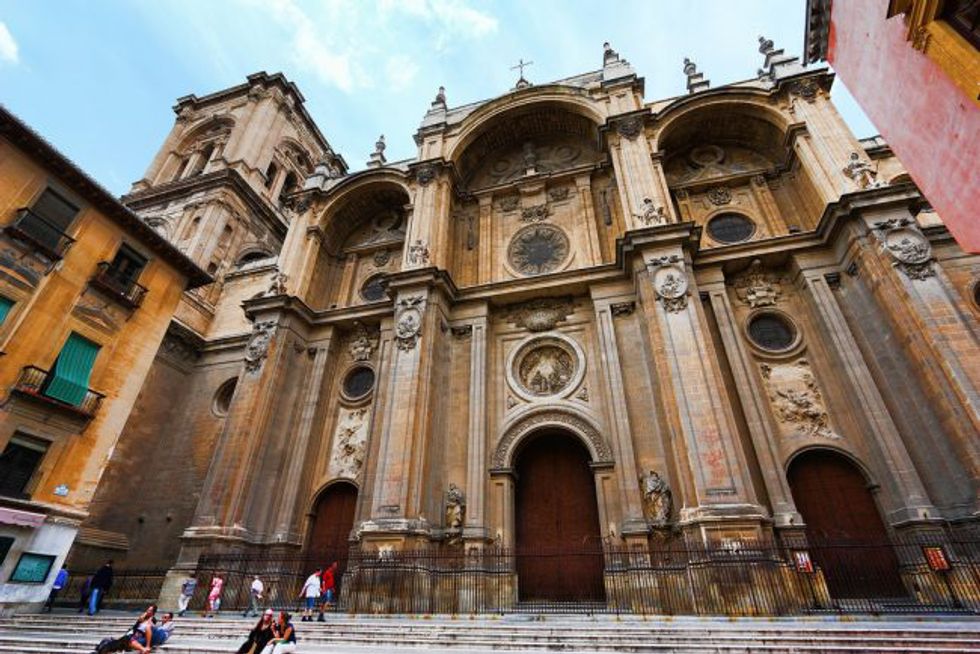
Granada’s Cathedral. PC Wenjie Zhang, flickr
Where to see a performance:
Cuevas Los Tarantos, Casa del Arte Flamenco or even on the street in Plaza de Alonso Cano in front of Granada’s Cathedral.
Granada, Sevilla and Jerez are all very close, and Madrid is just a few hours from Sevilla on the Ave, the high-speed train linking much of Spain. Wherever you decide to go, Spain’s flamenco community will surely welcome and inspire you.
For more information on visiting Spain for flamenco, visit: www.guiaflama.com and www.andalucia.org
